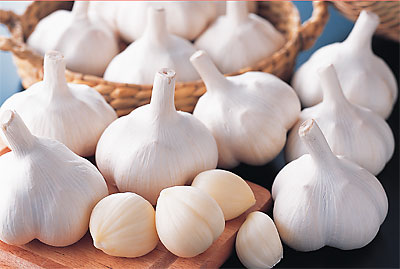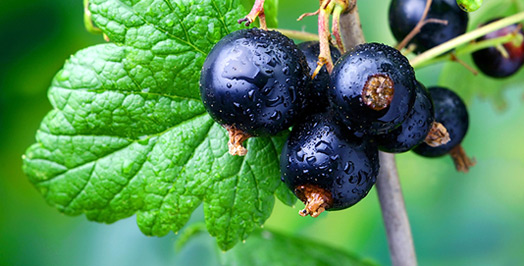多くの人は、青森といえばリンゴの生産を連想しますが、他にもたくさんの名産物が青森県にはあります。
Most people associate Aomori with apple production, however there are also many other local specialties in Aomori.
にんにく/Garlic

青森県のにんにくは、国内生産量の約80%という高いシェアを占め、ブランド化されています。
大玉で1片が大きく実がよくしまり、雪のような白さと品質の良さが特徴で、田子町(県の主な生産地)は「にんにくの町」として知られています。
原産地は中央アジアと推定されていますが、紀元前3200年頃の古代エジプト時代では栽培・利用されていたといわれています。
日本には奈良時代(710~794)に朝鮮を経て伝わりました。
Garlic produced in Aomori has become a brand of its own, holding an 80% share of the domestic market.
Large, firm cloves along with its snow-white color make up the distinguishing characteristics of Aomori’s garlic. Takko Town, the top producer of garlic in the prefecture, is known as the “town of garlic”.
Garlic is thought to have originated in Central Asia, but it is said that garlic was cultivated and used in ancient Egypt at around 3200 B.C.E.
It was first introduced to Japan in the Nara period (710-794) through the Korean Peninsula.
カシス(黒房すぐり)/Blackcurrants (Ribes nigrum, also known as “Cassis” in Japan)

カシスは寒冷地での栽培に適していることから、青森県ではカシス栽培にとりくんでおり、日本の生産量の90%が生産されています。
カシスは、ブルーベリーやイチゴなどの仲間で、ぶどうの実を小さくしたような形です。
ヨーロッパから中央アジアにかけての寒冷地に自生し、イギリスや北欧では生のままで食べられています。
日本へは明治時代(1868~1912)に伝わりました。
ビタミンCが豊富で健康効果があると言われています。酸味が強く、特有のクセがあるのでジュースやジャム、果実酒などに加工されることが多いようです。
Blackcurrants are suitable for growing in cold climates. Aomori has made great efforts in cultivation blackcurrants, producing 90% of the entire domestic production.
Closely related to blueberries and strawberries, blackcurrants are shaped like small grapes, and can be found in the cold climates of Europe and Central Asia. They are sometimes eaten raw in Northern Europe and Britain. Blackcurrants first came to Japan during the Meiji period (1868-1912).
The fruit has a strong sour taste, and contains high concentrations of vitamin C, a substance thought to have health benefits. Due to its sour nature, blackcurrants are often made into juices, jams, liqueurs, etc.
※情報誌「あおもり国際交流つうしん」97号掲載
